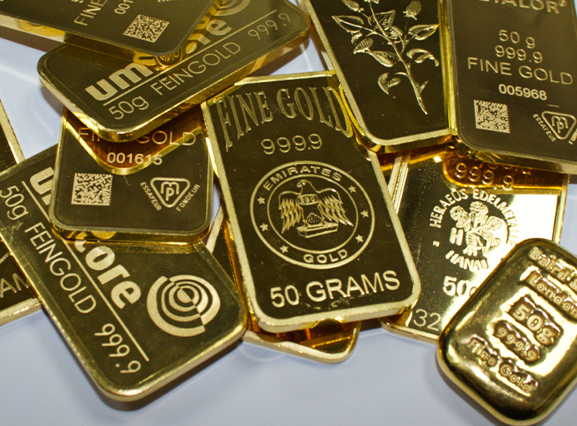
Key Takeaways:
• Central banks are buying gold again, with annual demand up 18% in 2022.
• Two main reasons for this trend are: a) gold performs well in times of crisis, and b) it is a long-term source of value without debt or counterparty risk.
• Emerging economies, such as China and India, are stockpiling gold to reduce their reliance on the US dollar as the global reserve currency.
• Increasing gold-buying by central banks could lead to rising gold rates, greater stabilisation of currencies, and a decrease in the value of other investment assets such as stocks and bonds.
|
Historically, central banks bought gold because of its role in the international financial system. Gold was money, and currency was a paper derivative. People or countries would hold notes or coins, knowing they could exchange them for gold whenever they wanted.
That system, though, began to change in the mid-20th century. After 1976, the formal legalities linking gold to the U.S. dollar disappeared, ending the post-WWII Bretton Woods system.
Interestingly, though, central banks continued to hoard gold, despite lacking the ability to exchange dollars for it at a fixed rate. Therefore, while the official, physical link between gold and currencies disappeared, gold remained a monetary metal, piling up in vaults, even if policymakers didn’t want to admit its role publicly.
Today, central banks are again purchasing gold en masse, despite the rise of digital assets. Annual gold demand was 18 per cent higher in 2022 than the prior year, with more than 4,741 tons traded, the largest volume since 2011.
This spree-like buying is raising eyebrows. What’s driving the activity?
Why Is Gold Purchasing Increasing?
Mainstream outlets claim gold purchases are at an all-time high for two reasons. First, gold tends to perform well in times of crisis. When inflation is high and output stagnant, the precious metal does well (as it did during the stagflation of the 1970s).
Second, gold is a long-term source of value without debt or counterparty risk. Therefore, many outlets claim that central banks hold it to manage risk. It always maintains its value relative to goods.
For years, the U.S. dollar served as the global reserve currency. All countries would first exchange local currencies for the dollar and then convert the dollar into the local money they want to buy.
In 2022, though, central banks started to get worried. The dollar’s value rose considerably because of economic and geopolitical fears, causing devaluation elsewhere. Suddenly, countries found it difficult to finance imports and maintain their pegs or fixed exchange rates against the dollar.
That might be one of the reasons Turkey bought more than 542 tonnes of the metal in 2022. The country was experiencing ultra-high inflation and used gold to instil more confidence in the forex markets.
However, when you look at other countries buying gold, it points to a different theory. The main contributors are BRICS nations wanting greater monetary independence. For instance, China has been stockpiling gold for years to reduce reliance on the dollar. Eventually, it would like the yuan to replace it as the world’s reserve currency, giving it the same terms-of-trade advantages the United States enjoys today. India is also buying gold to shore up the rupee, which fell over 10 per cent against the dollar in 2022, thanks to aggressive Federal Reserve rate hikes.
Implication Of The Gold-Buying Trend For The Global Economy And Gold Market

If gold-buying continues, several things may happen.
First, consumers see gold rates go up, and those with existing holdings will see their value rise.
Second, gold will play a more significant role in stabilising currencies. Central banks will use the metal to maintain pegs with the dollar or prevent excessive depreciation or appreciation that could hurt domestic consumers.
Lastly, increasing gold-buying could cause the price of other investment assets, such as stocks and bonds, to fall. Investors may allocate more capital to the precious metal if they believe it offers higher risk-adjusted returns.
A new global gold standard and the end of the U.S. dollar as the world’s reserve currency seem unlikely. However, it could happen if countries lose faith in the existing system, perhaps because of a government debt default.
Will The Current Gold Buying Trend Continue?
Gold buying is likely to continue as long as two things remain: inflation and geopolitical instability. Inflation drives gold investment because it helps investors maintain portfolio values during turbulent periods, while geopolitical instability drives demand as institutions look for safe-haven reserve assets.
Inflation is unlikely to fall in the coming years for several structural reasons, including:
- An unwillingness of governments or private institutions to write off debts
- The release of baby boomer retirement assets
- Dislocated international trade
- Dwindling supplies, commodities, and resources globally
Similarly, geopolitical instability looks set to continue with the Russian war. NATO continues to supply Ukraine with arms, and Russia keeps escalating its nuclear rhetoric. China is also furnishing Russia with non-lethal supplies to help it continue.
Therefore, regular investors should feel positive about the gold market. Central banks will likely continue buying gold reserves. And financial trends mean that the precious metal is more popular than ever.


















